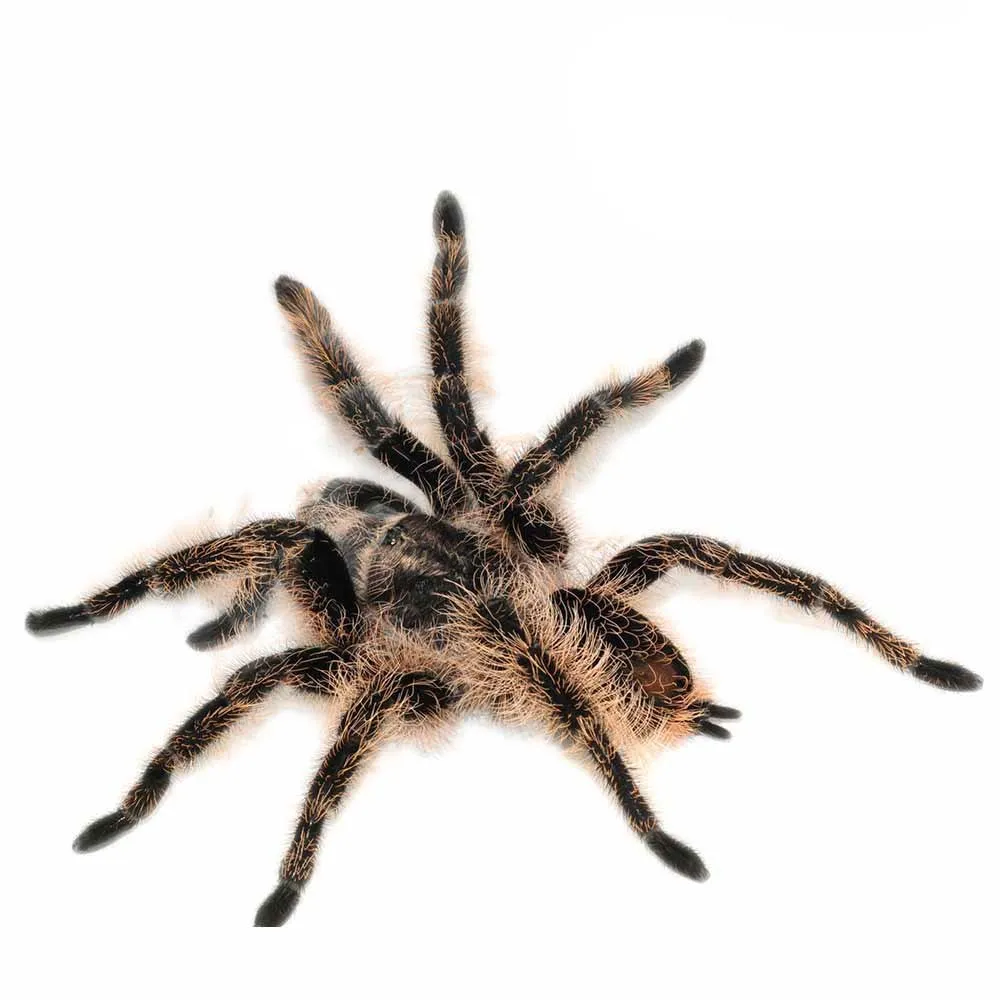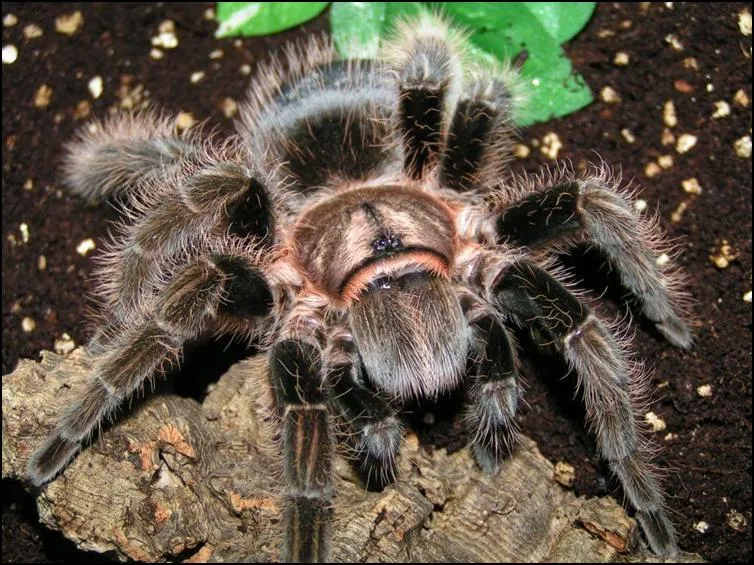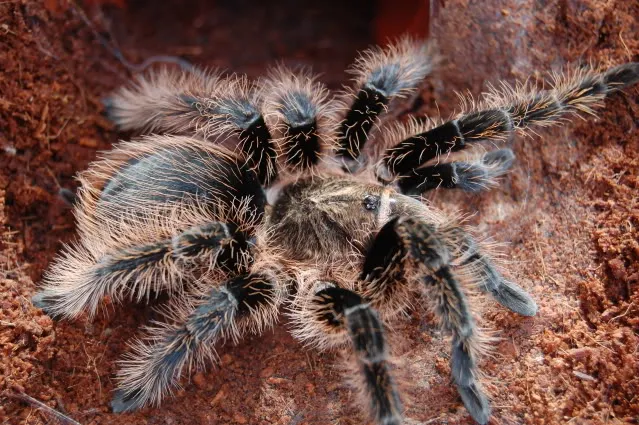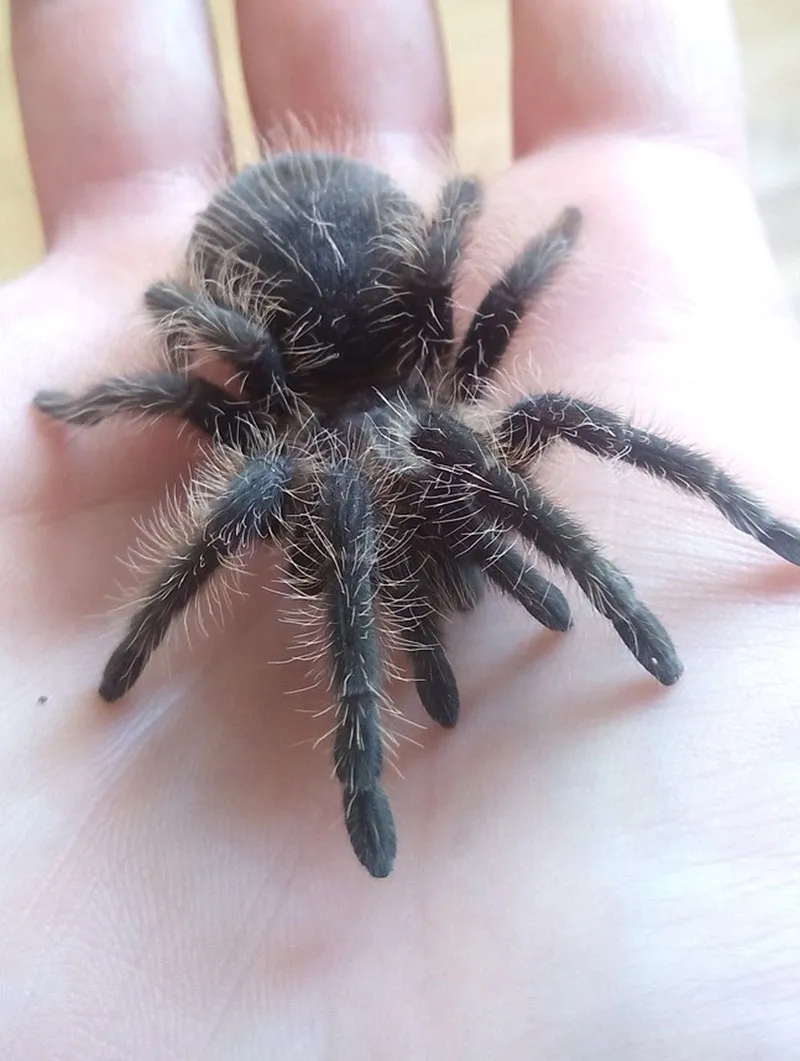What is Curly Hair Tarantula Venom
The curly hair tarantula ( Tliltocatl albopilosus) is a popular pet spider, known for its docile nature and distinctive, fuzzy appearance. Native to the tropical dry forests of Costa Rica, these arachnids are not typically considered dangerous to humans. However, like all tarantulas, they possess venom, which they inject through their fangs as a defense mechanism. This venom serves to subdue prey, primarily insects, and to deter potential predators. Understanding the composition and effects of this venom is crucial for responsible pet ownership and for dispelling common misconceptions surrounding tarantulas.
Venom Composition
Tarantula venom is a complex mixture of various compounds. Its composition can vary slightly between different species and even within the same species depending on factors such as age and diet. Generally, the venom contains a variety of toxins, enzymes, and other proteins. The primary function of the venom is to paralyze or kill prey. Although the exact composition of curly hair tarantula venom is still being researched, the main components include neurotoxins and enzymes.
Neurotoxins in Venom

Neurotoxins are a critical component of tarantula venom, affecting the nervous system of the target. These toxins disrupt the normal functioning of nerve cells, leading to paralysis. The specific neurotoxins present can vary, but they generally target ion channels, which are essential for transmitting nerve impulses. In the context of a human bite, these neurotoxins contribute to the pain and localized symptoms experienced. Research into these neurotoxins is ongoing, with the aim of understanding their specific mechanisms and potential applications in medicine.
Enzymes and Proteins
Besides neurotoxins, tarantula venom also contains various enzymes and proteins. These substances play roles in breaking down the tissues of the prey, aiding in digestion. Enzymes can also contribute to the inflammatory response and localized effects of a bite. The specific types and concentrations of enzymes and proteins can influence the severity of the reaction to a bite. Some proteins might trigger allergic reactions in sensitive individuals, adding to the complexity of the effects. The study of these enzymes is valuable for understanding the overall impact of the venom and its role in the tarantula’s predatory behavior.
Effects of Venom on Humans
The effects of curly hair tarantula venom on humans are generally mild, which is a significant advantage if you own one of these pets. Unlike the venom of some other spider species, the venom of the curly hair tarantula is not considered life-threatening. Reactions typically remain localized and subside within a few hours or days. However, it’s essential to understand what to expect and how to respond if bitten, as individual sensitivities can vary. It’s always prudent to seek medical advice after being bitten by any animal.
Local Reaction

The most common effects of a curly hair tarantula bite are local reactions at the site of the bite. These include immediate pain, which can vary from a mild sting to a more intense burning sensation. Redness, swelling, and itching around the bite area are also frequently observed. The duration of these symptoms can range from a few hours to a couple of days. Proper care, such as cleaning the wound and applying a cold compress, can help to alleviate discomfort and speed up healing. Serious reactions are very rare.
Systemic Effects
Systemic effects, affecting the body beyond the bite location, are uncommon following a bite from a curly hair tarantula. In rare instances, individuals may experience mild symptoms like muscle cramps, nausea, or headaches. These symptoms are typically short-lived and resolve without medical intervention. In the unlikely event of severe systemic reactions, medical attention should be sought immediately. Monitoring for signs of an allergic reaction is also essential, particularly if the individual has known allergies.
Severity of the Bite
The severity of a curly hair tarantula bite is generally low. The venom isn’t particularly potent, and the amount injected is often minimal. Most bites result in symptoms that are comparable to a bee sting or a mild insect bite. Factors such as the individual’s sensitivity, the tarantula’s size, and the amount of venom injected can influence the severity. Careful observation and prompt treatment of any symptoms can help minimize any potential complications. The curly hair tarantula is not considered to be a species of significant medical concern.
Factors Influencing Venom Potency

Several factors can affect the potency of tarantula venom. Understanding these factors can help in assessing the potential risks associated with a bite. Keep in mind that the curly hair tarantula is typically a docile species, and bites are relatively rare in responsible pet ownership. However, awareness of the factors contributing to the effects of the venom is essential for informed handling and care.
Tarantula’s Size and Age
The size and age of the tarantula can influence the amount of venom it can inject. Larger, older tarantulas may potentially possess more venom, although this doesn’t necessarily mean that their bites are more dangerous. Younger tarantulas might have a smaller amount of venom. However, the potency of the venom itself is generally consistent regardless of the tarantula’s age or size. Proper handling techniques and understanding the tarantula’s behavior are far more critical than these factors when assessing risk.
Amount of Venom Injected
The amount of venom injected during a bite can vary. The tarantula’s control over venom delivery is not perfect; therefore, the amount of venom injected might vary based on how it bites and whether it feels threatened. Some bites might not involve venom injection at all, while others could result in a larger dose. The amount injected greatly impacts the severity of the reaction. The curly hair tarantula typically injects a relatively small amount of venom, which is one reason the bites are generally mild.
Individual Sensitivity

Individual sensitivity to the venom is a crucial factor. Just as some people are more sensitive to bee stings, some individuals might react more strongly to a tarantula bite. Allergic reactions are possible, although rare, and can lead to more severe symptoms. Pre-existing health conditions and overall health can influence how someone reacts. It’s always advisable to seek medical attention if you experience unusual or severe symptoms after a tarantula bite, especially if you have a history of allergies or sensitivities.
Treatment and First Aid
If you are bitten by a curly hair tarantula, it’s essential to take the correct first-aid measures. While the bites are generally mild, taking appropriate action can help alleviate discomfort and prevent complications. Keep in mind that the primary goal is to manage the local symptoms and monitor the individual for any signs of a more serious reaction. If in doubt, always seek medical advice from a doctor or poison control center.
Immediate Actions
If bitten, the immediate steps to take include staying calm and removing yourself from the environment. Wash the bite area thoroughly with soap and water. Apply a cold compress or ice pack to reduce swelling and pain. Elevating the affected limb can also help minimize swelling. Monitor yourself for any signs of an allergic reaction, such as difficulty breathing or swelling of the face or throat. Contact a healthcare professional if symptoms worsen or if you experience any signs of systemic reactions. The best thing is to take proper action and avoid making any sudden movements.
Medical Treatment

Medical treatment for a curly hair tarantula bite is usually symptomatic, focusing on alleviating pain and reducing inflammation. Over-the-counter pain relievers, such as ibuprofen or acetaminophen, can help manage pain. Antihistamines can be used if itching is a significant symptom. In rare cases of severe reactions or allergic responses, a doctor might prescribe stronger medications, such as corticosteroids or epinephrine. The medical team might also need to check for secondary infections. Professional medical assessment is always essential if you are worried about the bite.
Myths vs. Facts about the Venom
There are several misconceptions surrounding tarantula venom, especially regarding the curly hair tarantula. Separating myths from facts is essential for responsible pet ownership and to avoid unnecessary fear. Understanding the real dangers and risks allows for informed decisions and better interactions with these fascinating creatures. Many of the fears surrounding tarantula venom are unfounded and exaggerated.
Myth 1 Lethal Venom
One of the most common myths is that curly hair tarantula venom is lethal. This is far from the truth. The venom is not considered life-threatening to humans, and serious complications are extremely rare. While the bite can be painful and cause localized symptoms, it is not capable of causing death. This misconception is based on the fear of spiders in general and is not based on any scientific evidence. In most cases, the effects are minor, and most people will recover within a few hours or days.
Myth 2 Aggressive Behavior Causes More Bites

Another myth is that curly hair tarantulas are aggressive and prone to biting. In reality, these tarantulas are generally docile and are not likely to bite unless they feel threatened or provoked. Bites usually occur when the tarantula is mishandled or feels its life is in danger. Responsible handling and understanding the tarantula’s behavior can significantly reduce the risk of being bitten. They tend to run rather than bite.
Fact Mild Venom, Rare Reactions
The fact is that the curly hair tarantula has relatively mild venom, and serious reactions are rare. While a bite can cause discomfort and localized symptoms, it rarely requires extensive medical intervention. Most people recover quickly with minimal treatment. Understanding the actual effects of the venom and practicing safe handling are the best ways to manage the risks associated with these spiders. The curly hair tarantula, with its gentle temperament, is a favorite among pet owners.
